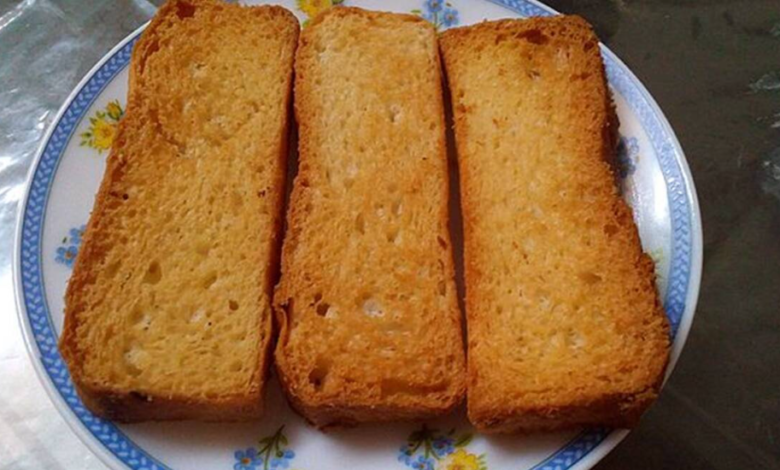Is Your Preferred Afternoon Snack Rusk Healthy?

Rusk is frequently dipped in chai and is a popular addition to the beverage for many people. Many others enjoy munching on it whenever they get hungry at strange times. But is rusk wholesome? Exactly that is what we set out to discover in this post.
When you look closer, you will see that rusk is actually nothing more than a baked mixture of refined wheat, sugar, inexpensive oils, additional gluten, and a few potentially dangerous food additives. The fact that each of these components will increase blood glucose levels, inflammation, or even both make this combo unhealthy.
Rusk ingestion on a regular basis or frequently results in systemic inflammation and unstable blood sugar levels, which cause insulin resistance (which leads to an overall sense of metabolic unease in the body). Rusk also encourages the development of harmful bacteria in your gut, lowering immunity, vitamin absorption, insufficient digestion, and unneeded food cravings.
To cut a long story short, rusk has absolutely no benefits to give, not even the ones that boast of being healthy with suji. It affects your stomach, immunity, and hormonal balance causes weight gain, elevates bodily stress levels, induces fatigue, stimulates food cravings, and more.
- Refined wheat flour: Wheat flour that has had its bran, vitamins, and minerals removed. Therefore, it contains no fiber.
- Sugar: It just increases your consumption of empty calories. Even if you abstain from sweets for the remainder of the day, Gupta noted that eating just two rusks will cause you to consume more sugar than usual.
- Refined vegetable oil: Once more, it has undergone extensive heat processing and offers no nutritional advantages. Consuming it will simply make your body’s irritation worse.
- Suji: Despite being manufactured from wheat, it has been completely devoid of any nutrients and fiber.
- Artificial flavors, emulsifiers, food additives, and preservatives: It might have all these added to it if you encounter chemical names or numbers that don’t make sense to you. They are used to increase a product’s shelf life, not to harm you.
- Food color: Another issue is food coloring, which is frequently used to give rusks a brown color by adding caramel or brown food coloring. It’s possible that this color is unhealthy. This is typically done to give the maida-based rusk a baked appearance and to make it look more like wheat.
If you still enjoy rusk with better tea accompaniments like seeng-chana or roasted makhana, here are a few things to remember.
Maida may also be present in multigrain rusks. So always opt for 100% whole wheat or 100% semolina rusk, emphasizing reading labels and pacing yourself when eating. Never recline with the entire package. Always keep an eye on your servings. Prior to making a purchase, read the product labels.
Look at some of the typical ingredients that are stated on practically every rusk package back to having a better understanding. Always start the components list with an ingredient that is present in significant quantities in the product, and then list the constituents in decreasing order of their presence.
News Mania Desk






